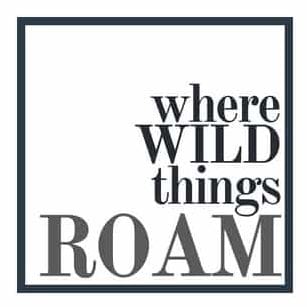Roam wild in Patagonia
Literally at the bottom of the world, stretching across the southernmost tip of Chile and Argentina, Patagonia is one of the most sparsely populated yet geographically and climatically diverse regions in the world.
In fact, this expansive territory of 757,000 square kilometres is home to only 1.7 million inhabitants. That’s why anyone visiting Patagonia is likely to be in it for a real sense of adventure.
Filled with awe-inspiring landscapes and rare wildlife, Patagonia is a paradise for nature lovers and adventurers. Moreover, Patagonia has played host to some of history’s most famous nautical expeditions.
From the Magellan Strait to Cape Horn, explorers have navigated the waterways of Patagonia for centuries, witnessing its majestic glaciers, mountains, and lush green subantarctic forests.
With so much natural beauty to explore, getting off the beaten track is an absolute must for intrepid travellers to Patagonia – and there are three great ways to do it; by road, water, and on foot.
While Patagonia’s unique and unspoilt interior has so much to offer, it’s also a region surrounded by fjords and islands, particularly the southern end of Patagonia, Tierra del Fuego, an archipelago full of fjords and channels.

That’s why Australis expedition cruises have been taking travellers to some of the most remote corners of Patagonia for 29 years – so remote they’re almost impossible to reach by road or on foot. Here’s a few popular cruising spots around the fjords and icy waters of Patagonia.
Patagonia has something to offer hikers of all ages, ability and experience level. The Singular Patagonia offers guests the chance to get the best out of their walking experiences by offering several guided hikes of varying lengths.
The destination typically attracts a mix of people. Adventure travellers who are interested in the amazingly different natural landscapes make up a large volume of travellers (across all ages and demographics), however there is a real increase in the millennial demographic.
The destination offers such a huge number of different things to do, though most of it is centred on being outdoors. Getting to grips with a myriad of weather conditions is a part of travelling in Patagonia, so travellers who are physically fit and are happy to be adaptable to the changing conditions will be right at home!
Travelling to Patagonia

LATAM Airlines currently flies to Santiago daily from Sydney via Auckland and five times a week direct from Melbourne.
In May 2019 LATAM announced it will be operating three non-stop flights per week from Sydney to Santiago by the end of 2019. At this time, Sydney to Santiago via Auckland will reduce to four days a week. LATAM also announced plans to reduce Santiago to Melbourne from five to three times weekly, effective August 2019.
Flights from Santiago to Punta Arenas depart five times a day. Qantas flies Sydney to Santiago three times weekly.
There is a $US117 visa fee on arrival in Chile for Australian passport holders, which can be paid in exact cash or with a credit card.
There are two main roads which slice their way through Patagonia’s otherwise isolated and impenetrable terrain: The Carretera Austral in Southern Chile and Argentina’s Ruta 40 which runs along the Chilean border and parallel to the Andes. The 1,200 km Carretera Austral and the 5000km Ruta 40 (which starts at the Bolivian border) offer road trippers an unforgettable journey meandering through snow-capped mountains, rainforests and valleys while passing stunning rivers and glaciers en route.
International companies such as Hertz, Avis, Europcar, and Budget operate in Patagonia, as well as local rental companies. It’s worth planning a round-trip to drop off the vehicle at the same pick-up point as this can save you a lot of money.
With exclusive access to the southernmost fjords, Australis Patagonia Cruises explores Chilean and Argentinean Patagonia. As the only cruise line operating in this area, Australis offers guests exclusive access to the untouched fjords of Patagonia.
For those on a smaller budget or with more time to travel, buses are an easy and surprisingly comfortable form of transport in Patagonia. If you’re hoping to journey between towns and cities in Patagonia or cross the border into the neighbouring country, buses are the easiest method.
Top 10 things to do in Patagonia

Quelat National Park
The Carretera Austral runs through 85 kilometres of the 150,000-hectare Quelat National Park which is home to falls, forests, rivers and the striking 1.4km long Hanging Glacier. There are various vantage points from which to appreciate this natural wonder as its crystal blue ice formations stretch between two imposing mountain peaks.
Rio (river) Futaleufu
A little further down to earth, the Rio (river) Futaleufu is considered to be one of the best rivers for whitewater rafting in the region. Here, you’ll be able to experience the energy of Futaleufu’s cascading clear blue waters against the backdrop of lush green hills and rocky mountain peaks. It’s slightly off the Carretera Austral, but’s it’s well worth the detour.
Torres del Paine National Park
The wild and rugged landscape of Torres del Paine National Park is a focal point for hikers and horse riders. Home to towering mountains, blue glaciers, and grasslands teaming with wildlife, visitors will never feel like they’ve seen the same scene twice as the seasons appear to revolve throughout the day. The three granite towers (torres) from which the park takes its name are an absolute must-see attraction for anyone.
Glacier National Park
Officially ‘Los Glaciares National Park’, is Argentina’s largest national park. Of all the Patagonia tours out there, this one is a must-do for hikers and climbers. The massive park covers some 7,296 square kilometres, so there’s plenty of ground to cover – and plenty of mountains to scale.
Cerro Castillo
Beginning in the town of Villa Cerro Castillo, hikers will ascend the trail to Cerro Castillo lake through forest, grasslands and the rocky terrain towards the elevated peaks which surround these aqua-blue waters. While it’s popular to camp overnight to enjoy the sunset, it’s possible to complete the return hike within the day.
Mount Dorotea Lookout
Ascending to an elevation of 600 metres, this trek will journey through native wildlife, Lenga trees and many other plant species towards Last Hope Lookout. From here, panoramic views can be enjoyed of the small city of Puerto Natales alongside fjords, mountains and ice fields.
The Huemul Circuit
This 63km 4-day hike isn’t for the feint hearted. With much of the trail steep and unmarked, those brave enough to take on the challenge will find themselves hiking through meadows, crossing rivers via zip line, and sleeping in the mountains elevated above Viedma lake and glaciers.
Fitz Roy
The Fitz Roy mountain formation is well known for its jagged tooth-like appearance protruding from the snow. The trek starts from the town of El Chalten, and while mostly flat, leads to a steep rocky trail towards the base of Fitz Roy where you’ll be greeted by a stunning blue lagoon in the foreground of this famous formation.
Magdalena Island
In the Strait of Magellan, halfway between Tierra del Fuego and the Chilean mainland, lies Magdalena Island. The island is best known for its huge penguin population, many bird species, and a vintage lighthouse dating back to 1902.
Pia Glacier
There’s no better way to appreciate the magnitude of Pia Glacier than by entering the icy waters of Pia Fjord. Travellers aboard the Australis can disembark the boat and take a short hike to a vantage point where they’ll enjoy panoramic views of this glacier which spans between mountain and sea.
Cape Horn
A journey across Nassau Bay will take travellers to a remote archipelago which includes Cape Horn National park – otherwise known as the “End of the Earth”. Perfect for hikes and expansive views, Cape Horn is characterised by its 435-metre high rocky headland which overlooks the waters of Drake Passage.




